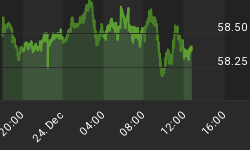Signs Of The Times:
The front page article included a chart titled "Mound of Debt" that showed the exponential growth of the face value of leveraged loans. These are defined as speculative-grade loans and unrated loans at interest rates of 1.25 points or more above Libor.
From almost nothing in 1996 the "mound" has soared from $240 billion in 2005, $400 billion outstanding at the end of 2006, to $480 billion as of May 31.
The fund is run by Bear Sterns and is called High Grade Structured Credit Strategies Enhanced Leveraged Fund. By our simple reckoning this comes out as financial engineering or as celebrated by Tokyo in 1989 "Zaitech".
This reminds of the old observation that in a contraction it can be difficult, if not impossible, even for AAA ratings to obtain loans, while in a boom it's impossible for any credit to refuse a loan.
The latter seems to be the case now and it seems likely that the lenders are carrying the loans on their books at par.
It's worth reviewing lending conditions. As the great bear market in bonds (1946 to 1981) was becoming rather distressed the market for treasuries was a disaster, the corporate market was worse, and there was virtually no such thing as a "Sovereign Market".
Notwithstanding this, the big banking syndicates out of New York continued to make loans to a variety of "Sovereign" borrowers and despite the unique turmoil in the credit markets, were insisting that the loans would be kept on the books at par. The thinking was that because countries always met their obligations their loans would always be worth par.
This delusion went on longer than it should have when a small bank away down the selling group decided in all honesty that it was going to mark its position to market.
The big banks insisted that this need not, nor should not, be done. The small bank, which was located outside New York, must have been managed by bankers, rather than economists, because common sense prevailed and the big banks were forced to mark their portfolios of doubtful paper to market.
As Wall Street Journal observes, there are mounds of doubtful paper out there.
















